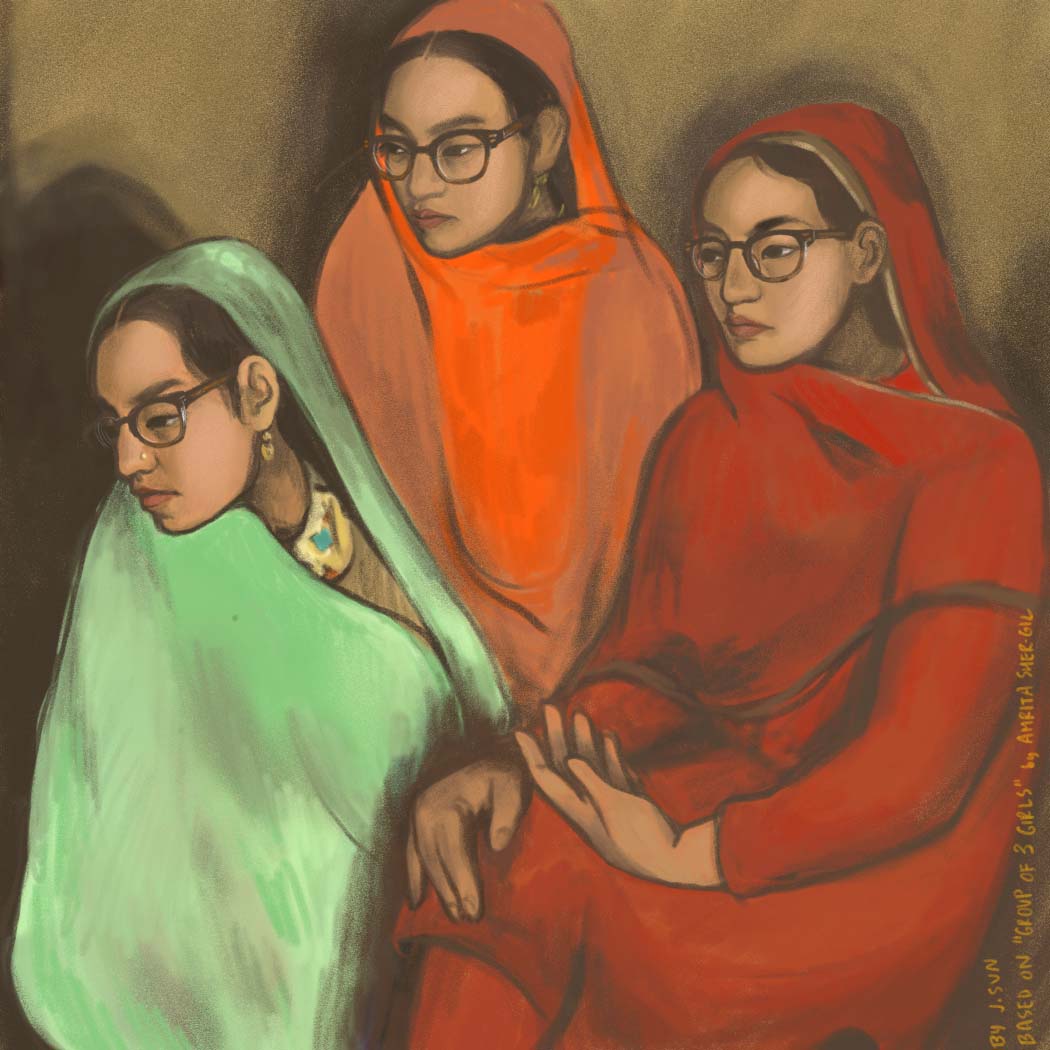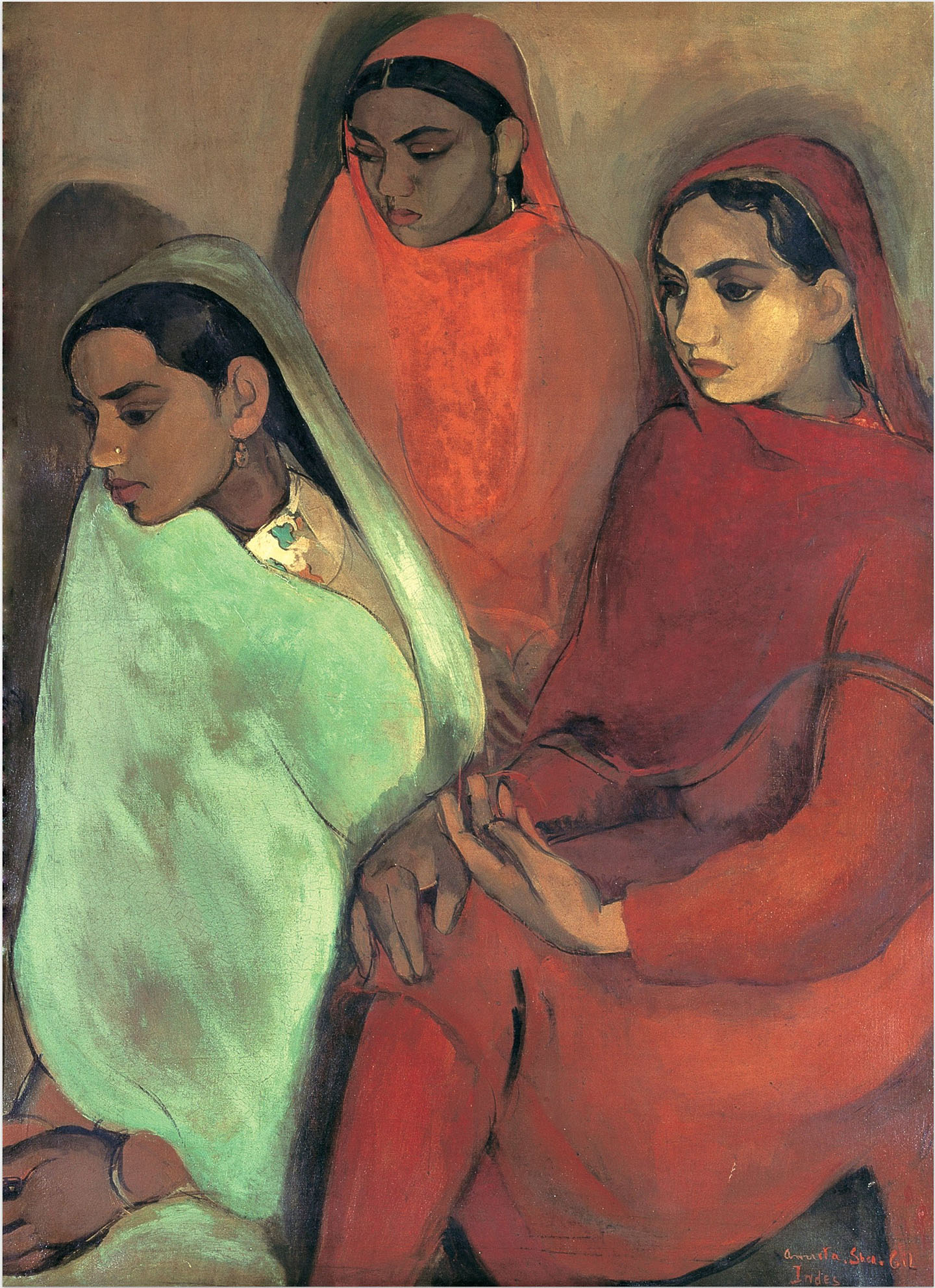53/100
Three Girls
-
Artist
Amrita Sher-Gil
-
Year
1935
-
Culture
Indian
-
Date of Copy
This entry is the one that forced me to actually confront what I was doing with race in this project, and thus understand some of its flaws.
First--let me tell you about the original painting. It's by Amrita Sher-Gil, an Indian Hungarian painter working in the post-impressionist era. She grew up in Hungary and learned to paint in Paris, then eventually went to India to paint the ordinary people there. She is now one of the most famous women painters in India. Her work is gorgeous and you should check it out if you don't know it.
I'd never heard of her until I did this entry, and found out about her because I'd posted a timelapse of a previous entry in this project on YouTube. Someone (I'm guessing from South Asia) commented asking me to do a master copy of one of her pieces. Once I researched her a bit, I fell in love with her work and wanted to happily comply. I thought this painting was gorgeous and got to work.
Once I went to do it though, I started to feel a bit weird about it. I didn't like the feeling of erasing these Indian women's faces to replace them with my own. This was compounded by knowing that many people with western educations like mine wouldn't know Amrita Sher-Gil or this painting either, and with this entry I could be taking the credit for choices that she'd made and work she'd done.
I realized that my project is a critique and a tribute at the same time. The tribute aspect is due to me showcasing these paintings to my viewers, and in spending tons of time and labor researching and copying them. The critique is of the Western Canon's tradition of glorifying only a specific type of white woman through painting. In a way this series of master copies was a call to increase representation of faces like mine. But the critique aspect doesn't work when I'm copying a painting that exists to depict the plight of someone just as or more marginalized than myself. To put it in a more extreme example, it would be really weird for me to do a master copy of a painting of, say, Harriet Tubman but replace her face with my own.
I came to the conclusion that that's ultimately a flaw in the premise of this project. It aims to increase representation, but it does that by elevating white westerners and their work, which still centers them. If I truly want to increase representation, in solidarity with other marginalized people, I need to find another way to do it.
I ended up going forward with this entry, but tried my best to credit Amrita Sher-Gil as much as possible when I posted it, so her name couldn't be missed. I'm glad I did this entry so that I could get to these insights for myself, but I decided to try not to replace more marginalized figures than myself again.
I think Amrita Sher-Gil struggled with her racial identity, too. Her painting Self-Portrait as a Tahitian (which, by the way, features Japanese figures in the background) clearly references Gaugin. Gaugin was one of the few people in the Western artistic tradition devoted to showcasing the beauty in dark-skinned women, so I understand how he could be an inspiration. But he looked at them with a fetishistic, exploitative eye (there's evidence of him sexually assaulting some of the young Tahitian girls he painted), emphasizing how primitive he thought they were. Also, obviously, Sher-Gil wasn't Tahitian at all. When I look at this painting, which she made in Paris, I sense her struggle for understanding, acceptance, and self-knowledge in the Western world she grew up and trained in. As a fellow woman of color living in the West, trying to understand myself and how I fit in to the society around me, I absolutely sympathize.
Reference image is from Wikipedia. It's now in the National Gallery of Modern Art in New Delhi.

